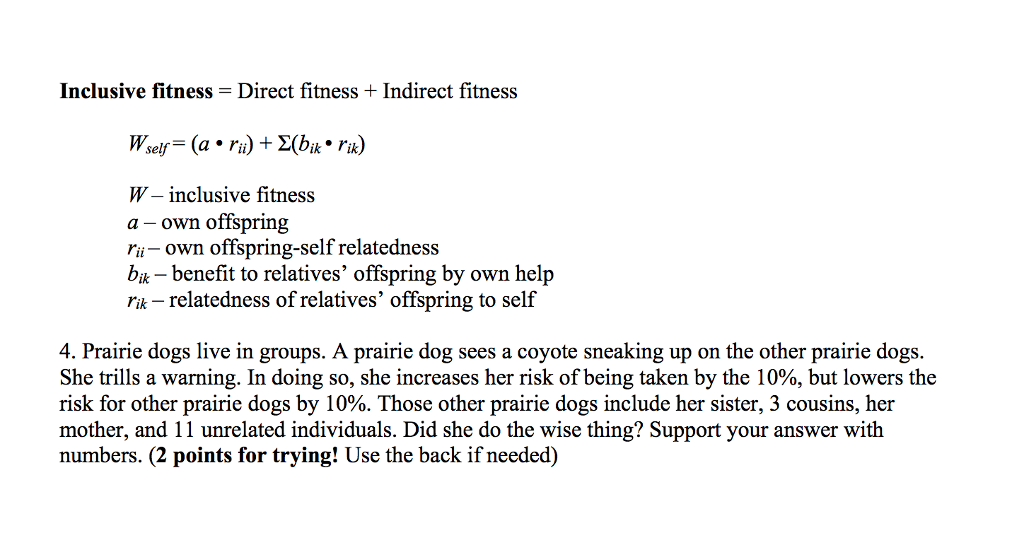Inclusive Fitness Formula
Inclusive fitness theory is most commonly applied to eusocial organisms such as bees and ants although it has also been invoked to explain cooperative breeding in animals such as birds and the adoption of orphaned young by asocial red squirrels tamiasciurus hudsonicus.

Inclusive fitness formula. It is assumed that personal fitness can be written as the sum of components caused by. Synalpheus regalis a eusocial shrimp also is an example of an organism whose social traits meet the inclusive fitness criterion. Orlove argued that the existence of two unrelated derivations of the formula for reduces or eliminates the ad hoc nature of the formula and of inclusive fitness theory as well. The larger defenders protect the young juveniles in the colony from outsiders.
R if also depends on all the demographic details and the current state of the population. The evolution of a p score depends on inclusive fitness calculated with its value of r if. By ensuring the youngs survival the genes will continue to be passed on to future generations. The derivations were demonstrated to be unrelated by corresponding parts of the two identical formulae for r displaystyle r being derived from the genotypes of different individuals.
Bill hamiltons 1963 and 1964 inclusive fitness articles are easily the most cited articles in the entire field of behavioral evolution and his work on altruism and kinship spurred endless dissertation projects and hundreds of published articles both theoretical and empirical.



